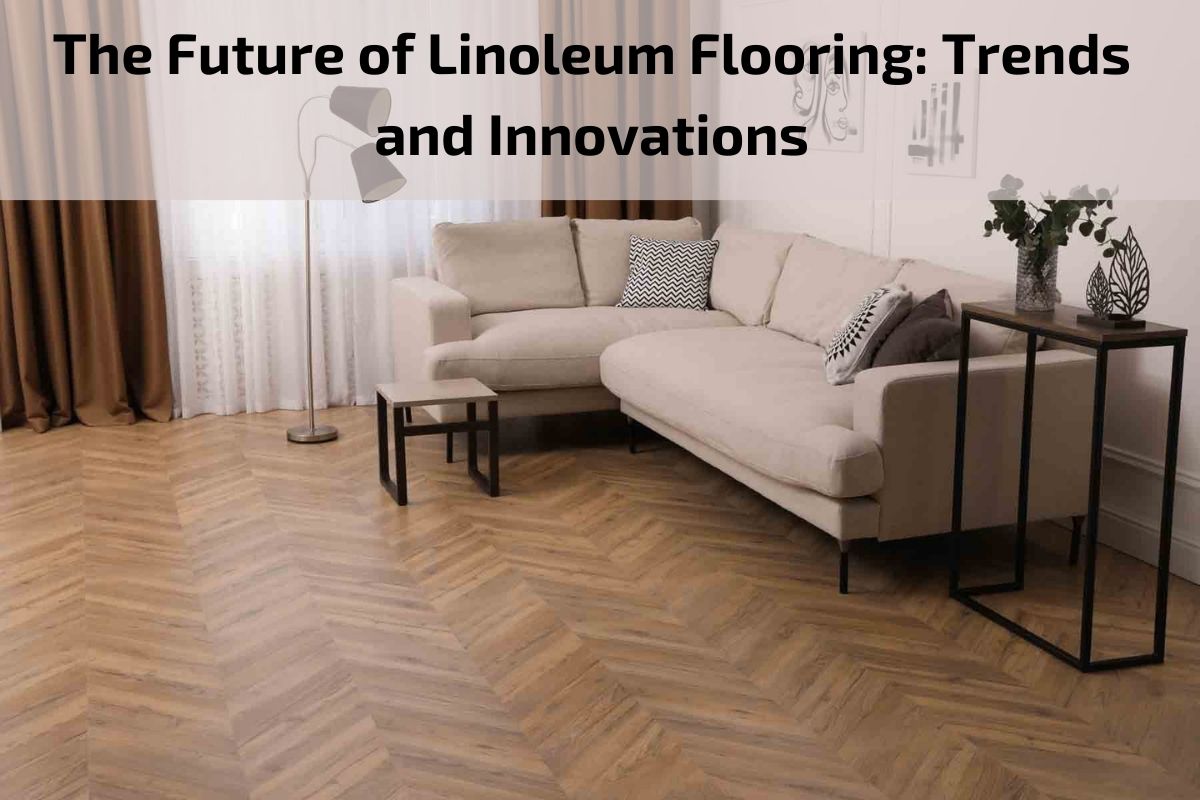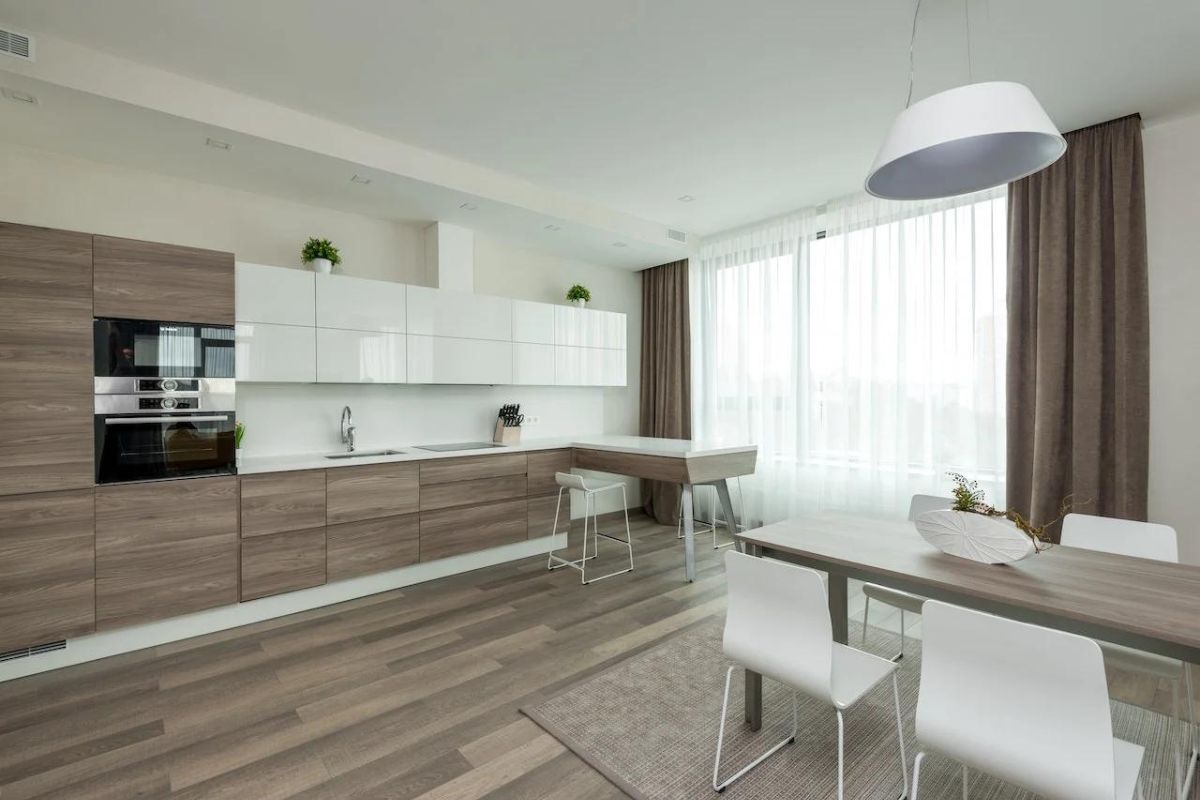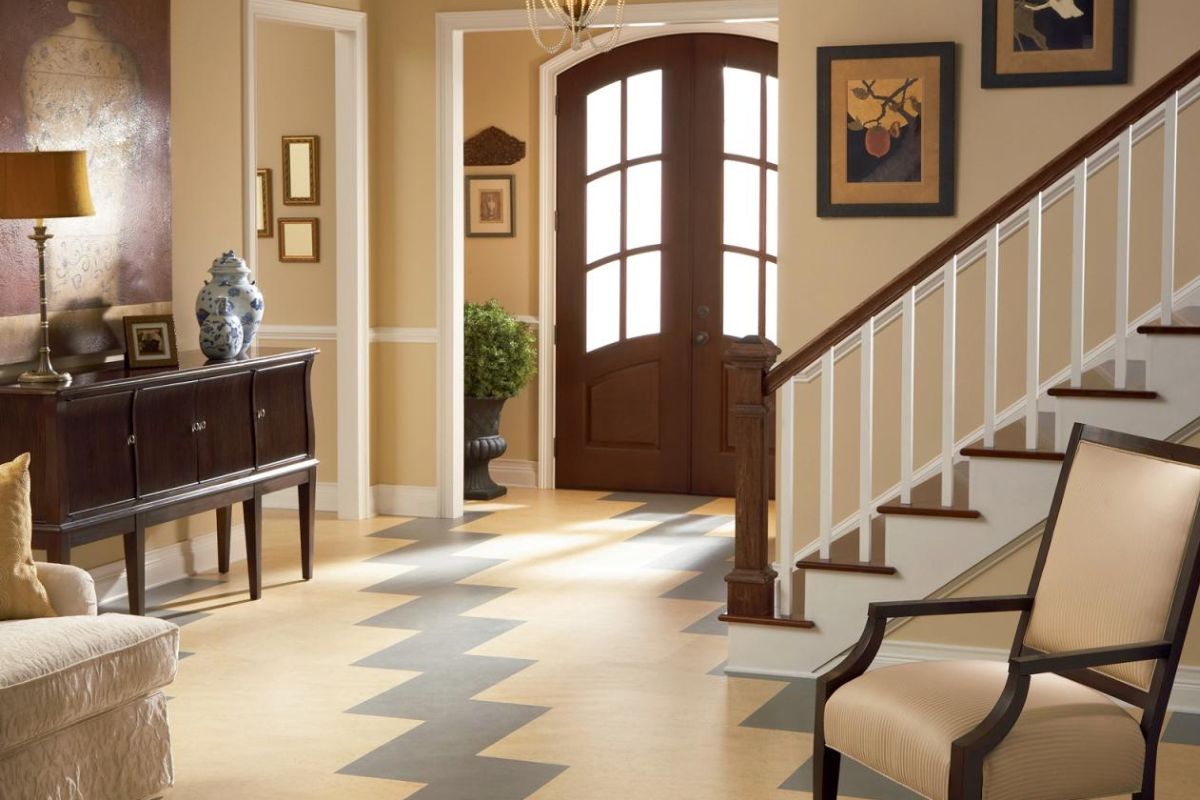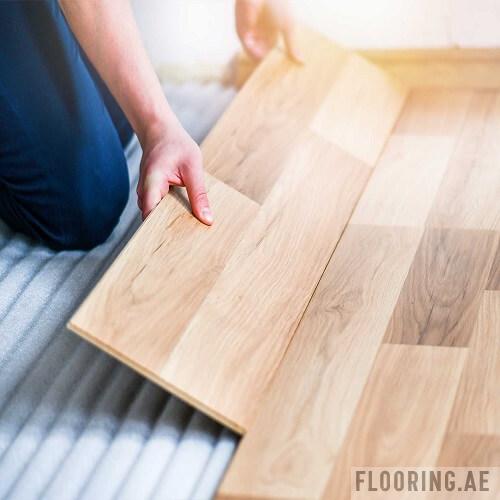As the world of interior design continues to evolve, so too does the landscape of flooring options available to homeowners and designers. Among these options, linoleum flooring stands out as a versatile and eco-friendly choice with a rich history and promising future. In this exploration of “The Future of Linoleum Flooring: Trends and Innovations,” we delve into the exciting developments reshaping the perception and application of this classic flooring material.
Linoleum, derived from natural materials such as linseed oil, cork dust, and wood flour, has long been celebrated for its sustainability, durability, and vibrant color palette. However, recent advancements in manufacturing techniques and design innovation have propelled linoleum flooring into a new era of relevance and desirability.
Brief Overview of Linoleum Flooring
Linoleum flooring is a versatile and eco-friendly flooring option that has been a popular choice for decades. It is made from natural materials such as linseed oil, cork dust, wood flour, and pigments, which are compressed onto a backing material such as jute or canvas.
Linoleum is known for its durability, resilience, and longevity. It can withstand heavy foot traffic and is resistant to scratches, stains, and moisture, making it suitable for various settings including residential, commercial, and institutional spaces.
One of the key advantages of linoleum flooring is its sustainability. It is made from renewable resources and biodegradable materials, making it an environmentally friendly choice compared to many other flooring options. Additionally, linoleum flooring is available in a wide range of colors, patterns, and designs, allowing for creative and customizable installations to suit different design aesthetics and preferences.
Environmental Advantages and Disadvantages of Choosing Linoleum Flooring
Linoleum flooring presents both environmental advantages and disadvantages that should be carefully considered before making a flooring decision.
Advantages:
Renewable Materials: Linoleum flooring is made from renewable materials such as linseed oil, cork dust, wood flour, and pigments. These natural ingredients are harvested from sustainable sources, making linoleum an environmentally friendly choice.
Biodegradability: Linoleum flooring is biodegradable, meaning it can break down naturally over time without releasing harmful chemicals or toxins into the environment. At the end of its lifespan, linoleum flooring can be disposed of in an eco-friendly manner.
Low Energy Production: The manufacturing process of linoleum flooring requires relatively low energy compared to other flooring materials. The raw materials used in linoleum production are processed with minimal energy consumption, contributing to its eco-friendly profile.
Longevity: Linoleum flooring is known for its durability and longevity. With proper care and maintenance, linoleum flooring can last for decades, reducing the need for frequent replacements and minimizing environmental impact.
Disadvantages:
Chemical Additives: Some linoleum flooring products may contain chemical additives or adhesives that can release volatile organic compounds (VOCs) into the indoor air. These VOCs can contribute to indoor air pollution and may pose health risks, particularly for individuals with respiratory sensitivities.
Manufacturing Processes: While linoleum flooring is made from natural materials, the manufacturing process may involve energy-intensive procedures and chemical treatments. Depending on the production methods used by manufacturers, the environmental impact of linoleum flooring production can vary.
Limited Recycling Options: Unlike some other flooring materials such as carpet or vinyl, linoleum flooring has limited recycling options at the end of its lifespan. While linoleum is biodegradable, recycling facilities for linoleum materials may not be widely available, leading to challenges in sustainable disposal.
Transportation: The transportation of linoleum flooring materials from manufacturing facilities to distribution centers and retailers can contribute to carbon emissions and environmental footprint. Opting for locally sourced linoleum products can help reduce transportation-related impacts.
Installation Techniques and Tips for Linoleum Flooring
- Proper installation is crucial for ensuring the durability, longevity, and aesthetic appeal of linoleum flooring. Here are some installation techniques and tips to consider:
Subfloor Preparation:
- Ensure that the subfloor is clean, dry, and level before installing linoleum flooring. Remove any debris, dust, or uneven patches from the subfloor surface.
- Repair any cracks, holes, or imperfections in the subfloor to create a smooth and stable foundation for the linoleum.
Acclimation Period:
- Allow the linoleum flooring materials to acclimate to the room’s temperature and humidity levels for at least 24-48 hours before installation. This helps prevent warping or buckling of the flooring after installation.
Correct Adhesive Selection:
- Choose the appropriate adhesive recommended by the manufacturer for your linoleum flooring type and subfloor material. Follow the adhesive manufacturer’s instructions for application and drying times.
Glue-Down Installation Method:
- For glue-down installation, apply the adhesive evenly to the subfloor using a recommended trowel size.
- Lay the linoleum flooring sheets or tiles carefully onto the adhesive, ensuring proper alignment and spacing between pieces.
- Use a heavy roller to press the linoleum firmly into the adhesive and remove any air bubbles or wrinkles.
Floating Installation Method:
- Some linoleum flooring products offer a floating installation method, where the flooring pieces are interlocked or clicked together without the need for adhesive.
- Follow the manufacturer’s instructions for proper interlocking and installation of floating linoleum flooring.
- Leave a small expansion gap around the perimeter of the room to accommodate potential expansion and contraction of the flooring material.
Seaming and Edge Treatment:
- If installing linoleum sheets, ensure that seams are tightly butted together and sealed with recommended seam sealer to prevent moisture penetration.
- For linoleum tiles, use spacers to maintain consistent spacing between tiles and ensure straight, even grout lines.
- Finish the edges of the linoleum flooring with appropriate edge treatments, such as transition strips or baseboards, to provide a clean and polished look.
Professional Installation Considerations:
- For complex or large-scale linoleum flooring installations, consider hiring professional installers with experience in working with linoleum materials.
- Professional installers can ensure proper subfloor preparation, adhesive application, and seam sealing to achieve optimal results.
- By following these installation techniques and tips, you can achieve a high-quality and long-lasting linoleum flooring installation that enhances the beauty and functionality of your space.
Maintaining and Caring for Your Linoleum Flooring: Best Practices
Maintaining and caring for linoleum flooring is essential to preserve its appearance, durability, and longevity. Follow these best practices to keep your linoleum floors looking their best:
Regular Cleaning Routine:
- Sweep or vacuum the floor regularly to remove dust, dirt, and debris that can cause scratches.
- Use a soft-bristled broom or a vacuum with a brush attachment to prevent any damage to the linoleum surface.
Gentle Mopping:
- Mop the linoleum floor periodically using a damp mop or cloth. Avoid excessive water, as standing water can seep into seams and edges, causing damage.
- Use a pH-neutral floor cleaner recommended by the manufacturer or a mixture of mild soap and water for effective yet gentle cleaning.
Prompt Spill Cleanup:
- Wipe up spills and stains immediately to prevent them from setting into the linoleum. Use a clean, damp cloth or sponge for gentle blotting.
- For stubborn stains, use a mixture of water and a mild detergent, but avoid harsh chemicals or abrasive cleaners.
Avoid Harsh Chemicals:
- Refrain from using abrasive cleaners, harsh chemicals, or products containing wax on linoleum flooring. These can damage the surface and compromise its finish.
- Check the manufacturer’s recommendations for approved cleaning products to maintain the integrity of the linoleum.
Protect High-Traffic Areas:
- Place mats or rugs in high-traffic areas and entryways to trap dirt and prevent excessive wear on the linoleum surface.
- Consider using protective pads or coasters under furniture legs to prevent scratches and dents.
Regular Polishing (if applicable):
- Some linoleum floors may benefit from occasional polishing to maintain their shine. Check the manufacturer’s guidelines to determine if polishing is recommended for your specific linoleum product.
- Use a linoleum floor polish that is compatible with your flooring type and follow the application instructions carefully.
Preventive Measures:
- Use furniture pads or gliders under heavy furniture to prevent scratching when moving items across the floor.
- Avoid dragging or sliding heavy objects directly on the linoleum surface.
Routine Inspection:
- Regularly inspect the linoleum flooring for any signs of wear, scratches, or damage. Address any issues promptly to prevent further deterioration.
- Check seams and edges for any lifting or separation, especially in areas with high moisture levels.
Proper Indoor Climate:
- Maintain a consistent indoor temperature and humidity level to prevent expansion or contraction of the linoleum.
- Use a humidifier in dry climates and a dehumidifier in humid conditions to regulate indoor humidity levels.
Professional Maintenance (as needed):
If your linoleum floor requires specialized maintenance, such as stripping and resealing, consider hiring professionals with experience in linoleum flooring care.
By incorporating these best practices into your linoleum floor care routine, you can ensure that your flooring remains beautiful, resilient, and enjoys a prolonged lifespan in your home or commercial space.
Conclusion
In conclusion, linoleum flooring stands as a durable, eco-friendly, and versatile flooring option suitable for various residential and commercial applications. With its renewable materials, biodegradability, and wide range of design options, linoleum offers homeowners and designers an attractive and sustainable choice for enhancing interior spaces.








